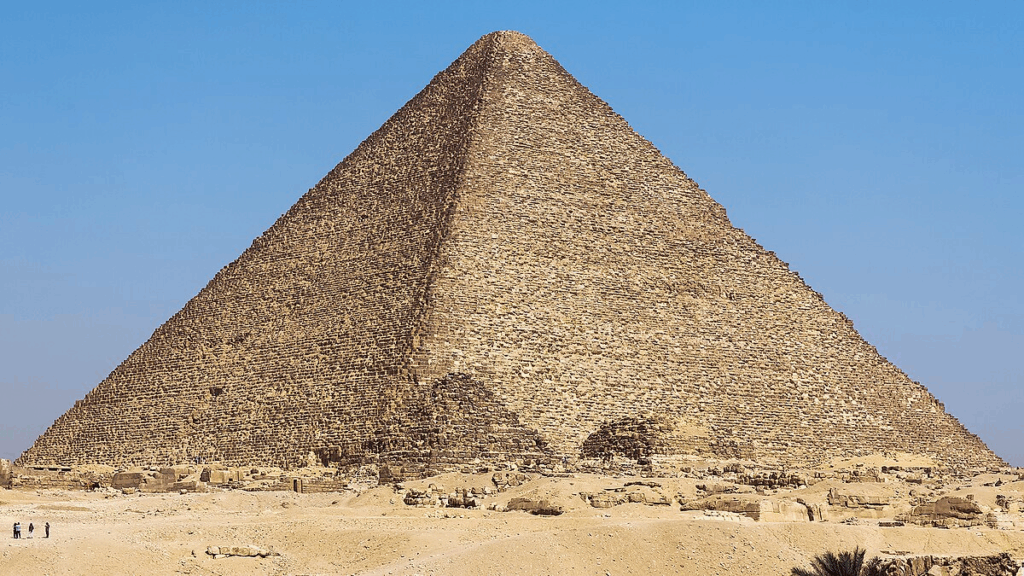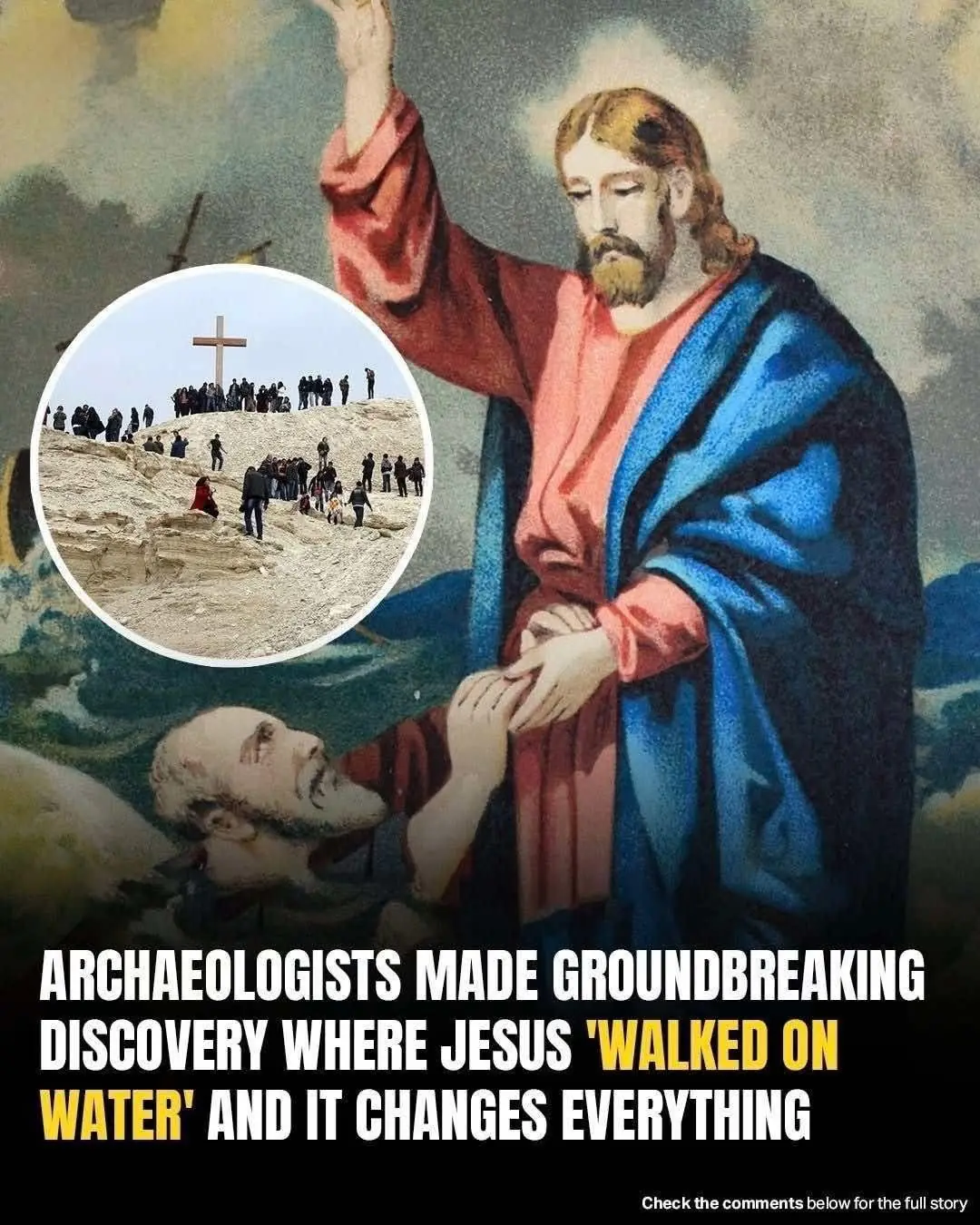
Archaeologists Claim Discovery Of Second ‘Hidden City’ Beneath Giza Pyramids—Sparks Historic Rewrite
The discovery of a second city, which scientists believe “proves” the presence of a vast underground network connecting the Giza pyramids 2,000 feet below the surface, follows the discovery of an underground “hidden city” in Egypt.
If verified, the recently found tunnels and chambers have the potential to change the course of history.
When the Italian team first announced in March that they had discovered enormous subterranean buildings beneath the Khafre pyramid, orthodox archaeologists strongly objected, calling the findings “false” and devoid of scientific support.
The team’s harshest critic, renowned archaeologist Dr. Zahi Hawass, claims that the ground-penetrating radar cannot detect thousands of feet below the surface.
Unfazed by the scrutiny, months after discovering similar shafts beneath Khafre, the team has now apparently found them beneath the Pyramid of Menkaure, the smallest of the three great pyramids at Giza.

The Great Sphinx and the pyramids of Khufu, Khafre, and Menkaure are part of the Giza complex, which is located west of Cairo. Because of their perfect astrological alignment, unknown building methods, and still-debatable purpose, they are all cloaked in mystery.
The research’s co-author, Filippo Biondi, a radar specialist from the University of Strathclyde in Scotland, told the Daily Mail that their data indicates a 90% chance that the Menkaure and Khafre share the same pillars.
The team arrived at the probability “through objective analysis of the tomography data, which, as experimental measurements, strongly indicate that the structures we identified beneath Khafre are also present under Menkaure.”
“We firmly believe that the Giza structures are interconnected, reinforcing our view that the pyramids are merely the tip of the iceberg of a colossal underground infrastructural complex,” Biondi said.
“This network likely consists of a dense system of tunnels linking the main subterranean structures.”
The contentious study, which hasn’t been peer-reviewed or published in a scientific journal yet, enthralled everyone when it was made public. Even podcast host Joe Rogan found it “fascinating.”
Nevertheless, renowned archaeologist Dr. Zahi Hawass called the discovery “bulls***” because his experts claimed that the equipment could not see so far below the surface.
The Italian researchers are continuing their work even if their conclusions have not yet been validated or refuted.
According to Biondi, pictures of the pillars beneath Menkaure and Khafre seem to be the same.
“The measurements reveal pillar-like structures with consistent characteristics,” he added.
“Given that Menkaure is smaller than Khafre, we believe the number of pillars is likely even but fewer than those under Khafre.”
According to estimates, those under Khafre were almost 2,000 feet long, with what appeared to be spiral-shaped buildings around each of the eight.
A’megastucture’ beneath the Giza plateau’s sands is the team’s hypothesis, which is further supported by the pillars beneath Menkaure.
When asked about the purpose of the hidden structures, Biondi said, “At this stage, we’re still gathering information to thoroughly study the matter, but we can confidently say that the operation of this structure likely involves the natural elements: air, water, fire and earth.”
“Discoveries like these under Menkaure challenge us to rethink our understanding of ancient Egyptian history and humanity’s past, opening new perspectives on our origins and capabilities.”
According to Biondi and his group, the buildings were constructed about 38,000 years ago by a vanished ancient civilisation.
But according to experts, the three pyramids are barely 4,500 years old.
The timeline developed by the Italian researchers is predicated on the hypothesis that a global calamity, perhaps brought on by a comet impact, wiped out a highly developed prehistoric culture about 12,800 years ago.
This hypothesis holds that the ensuing floods and upheaval destroyed the majority of evidence of this civilisation, whose surviving members taught following societies—including the ancient Egyptians—astronomy, engineering, and holy building.
A prominent supporter of the comet-impact theory and a geologist at the University of California Santa Barbara, Dr. James Kennett, told the Daily Mail that the Clovis people, a highly developed Stone Age culture in North America, mysteriously disappeared at the same time the comet is thought to have struck Earth.
“There is evidence of a major population decline in North America beginning at 12,800 years ago,” he said.
“That lasted a few hundred years, and then they started to come back — but as a different culture.”
Kennett cites impact evidence from Abu Hureyra in Syria, which is about 1,000 miles from Giza, as convincing even if he is unable to verify that the same impact effects happened in Egypt.
He claimed that if debris had hit that area, it might have caused the Mediterranean Sea and Nile River to flood massively, possibly swallowing portions of ancient Egypt.
The story of the flood resonates surprisingly well with the mythology of ancient Egypt.
According to prehistoric civilisations expert Andrew Collins, hieroglyphs on the walls of the Temple of Edfu, which is located some 780 miles south of Giza, describe a catastrophic flood that destroyed a secret civilisation known as the “Eldest Ones.”
Collins says the writings on the temple (called the Edfu Building Texts) tell of a’sacred realm’ in the Giza area that was destroyed by a ‘enemy serpent’ that plunged the world into darkness and flooded the land to the ground.
Because the species was used to represent celestial phenomena in ancient societies, Collins thinks the adversary serpent might be a metaphor for a comet.
Occasionally associated with a ‘Great Leap’ or an abrupt, disorderly incident, the serpent is portrayed in the Edfu Texts as a destructive force upsetting the primordial island.
Collins told the Daily Mail, “[The text describes] them storing sacred objects in an underground structure called the Underworld of the Soul.”
“This I am sure relates to Giza’s cave system and any structures it may contain.”
Collins contends that the fabled “Island of Creation” referenced in the inscriptions might represent a long-lost civilisation at Giza, a holy homeland destroyed in a cataclysm and later memorialised in myth, despite the fact that conventional Egyptologists generally reject his views.
Mainstream academics, however, argue that there is no explicit mention of Giza and that the Edfu inscriptions are merely symbolic.
According to their interpretation, the scriptures are mythological, and the gods that survived the deluge did not originate in Egypt; rather, they migrated there.
However, Collins maintains that the sophistication of ancient cultures such as the Gravettian peoples of Russia, who constructed rectilinear dwellings, wore tailored clothing, and may have tracked the movements of the moon as early as 30,000 years ago, raises the possibility that some important chapters are missing from the official timeline of human history.
“Just look at the immense sophistication of the Gravettian peoples of Sungir and Kostenki in Russia,” he said.
“As much as 30,000 years ago, they were building rectilinear structures that might well have been aligned to the moon, experimenting with agriculture and wearing tailored clothing. They looked and acted like people living in medieval times.”
News in the same category


Man Sentenced After Stowing Away On 120 Flights By Masquerading As Flight Attendant

Woman Spends Over A Decade Saving For A Nose Job—But Better Sit Down Before Seeing Her After

If You See A Woman Wearing A Wedding Ring On Her Pinky Finger Here’s What It Means

Experts Are Shedding Light on the ‘Death Rattle’ Phenomenon Before Passing

Experts Break Down How Far You’d Need To Be To Survive A Nuclear Blast

Experts Warn 1,000ft Mega Tsunami Could Slam Into Us Coast — Is Your Hometown In Danger?

Man Who Predicted Covid Outbreak Reveals Chilling Warning About New Emerging Crisis

Flight Attendant Reveals Why Cabin Says Hello As You Board, and It’s Not What Think

10 Cities That Could Be Underwater by 2050. Here’s The Full List

Never keep these 4 relics after losing a loved one

Flight attendant explains the unexpected reason cabin crew keep their hands under their thighs during takeoff and landing

Dad With 240 Tattoos Faces Backlash As People Think He Is A Horrible Father – Then His Wife Reveals The Truth

Woman Escapes Tragedy By Minutes After Missing Deadly Air India Flight — Her Chilling Story

Archaeologists reveal significant find at place where Jesus ‘walked on water’

Man Who Visited Every Country Without Flying Names the Worst Spot

Born on These Dates? You May Be Naturally Gifted, Experts Say

Frozen for 34 Million Years: Lost World Found Beneath Antarctica’s Ice

Why There’s a Growing Trend of Straight Men Dating Trans Women
News Post

Mom’s Natural Remedy with Lemon: A Modern Cure-All for Pain and Inflammation 🍋🌿

Unlock the Secret Elixir: Why Ginger, Cloves, and Lipton Tea Could Transform Your Health

🌿 The Hidden Power of Papaya Leaves: Nature’s Unseen Healer

Clove, Honey, and Cinnamon Blend: A Simple Daily Remedy for Wellness

Leg Pain, Rheumatism, Varicose Veins, and Arthritis? Try This Simple Garlic & Olive Oil Remedy!

12 Incredible Health Benefits of Phyllanthus Niruri – Don’t Throw It Away!

4 Types of Cancer with Over 90% Cure Rate: Everyone Should Watch for the Early Signs

If Cancer Is Developing in the Body, These 3 Nighttime Signs Often Appear — But Many People Ignore Them

5 Early Symptoms of Stomach Cancer That Help with Early Detection

Prostate Cancer: Warning Signs and Symptoms Men Shouldn't Ignore

8 Warning Signs Your Tongue May Be Sending About Your Health

Boost Your Iron: Essential Signs to Watch For & Effective Strategies

Scientists Explain How Sleeping on Your Left Side Affects Your Health

Scientists Explore Shocking Idea That Plants And Atoms Could Be Aware

Proven Health Benefits of Eating Eggs: More Than Just Breakfast Food

Eat Chia Seeds at Night for 1 Week & See What Happens to You! 🌙✨

Top Signs of Iron Deficiency & Science-Backed Ways to Boost Your Iron Levels

16 Benefits of Chayote Juice: Say Goodbye to Pills and Hello to Natural Healing

Mullein: The Powerful Plant That Soothes Your Lungs, Joints & Muscles Naturally
